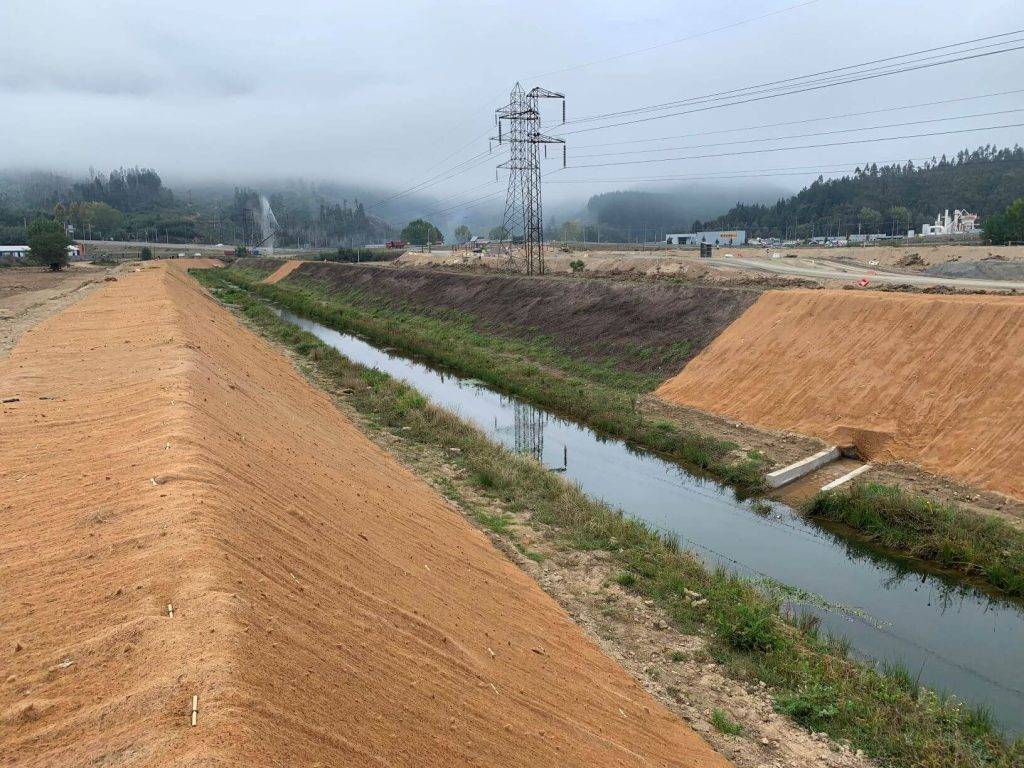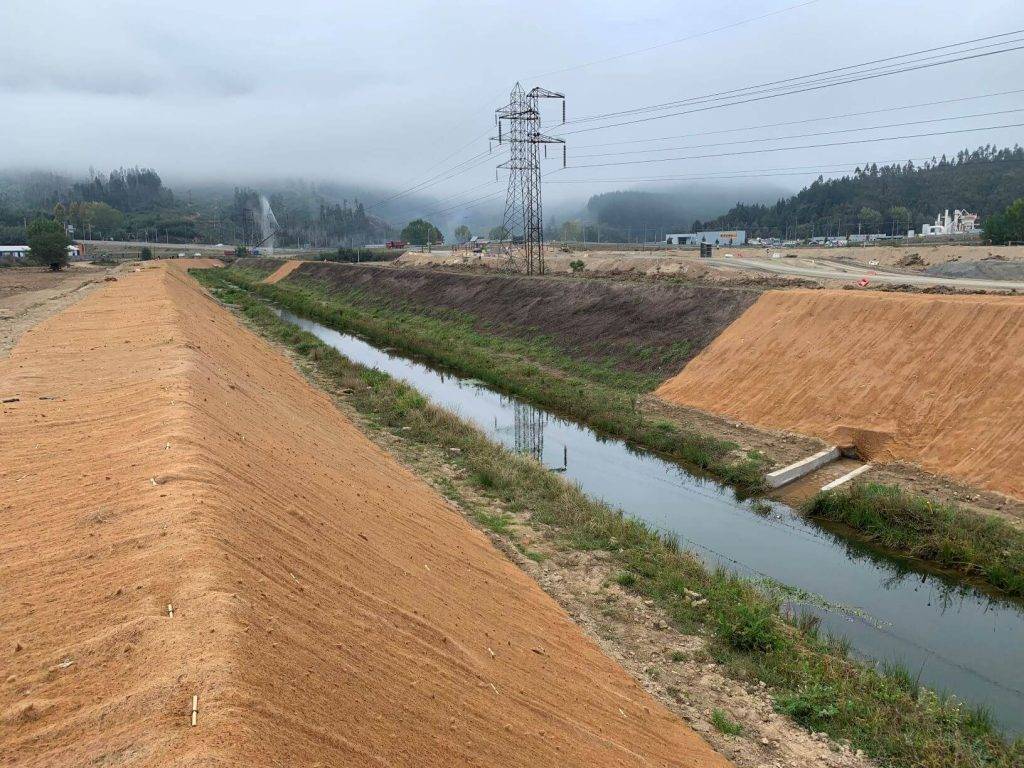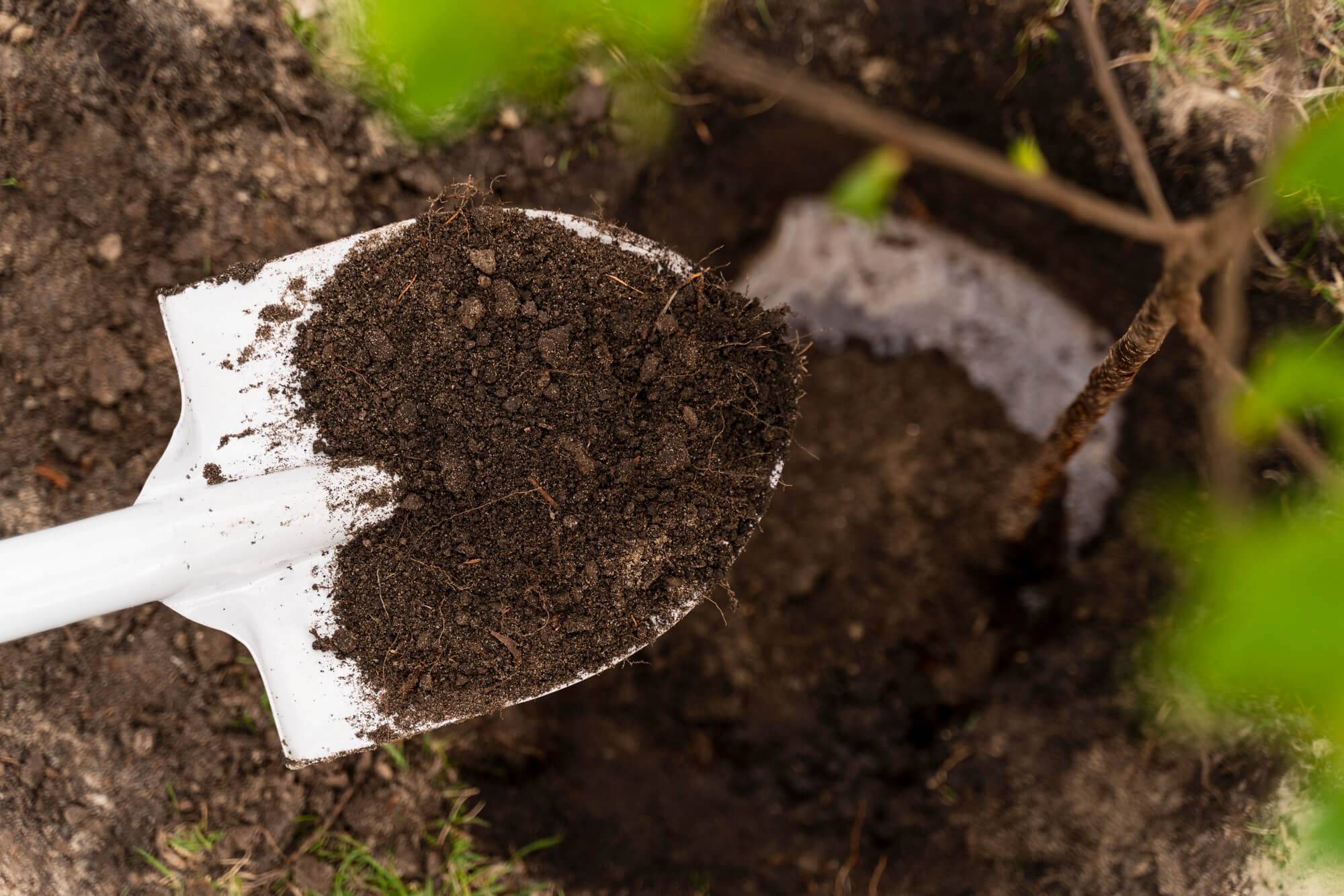Coir blankets, also known as coir mats or coconut blankets, are eco-friendly products used for controlling erosion in areas like riverbanks, streams, canals, and wetlands. They are made entirely from coconut fibers, making them both effective and biodegradable. Each blanket is constructed with a double layer of jute netting on the outside and a core of 100% coconut coir inside. This design makes them particularly well-suited for steep slopes (up to a 1:1 incline) and areas with strong water flow.

Coir Blanket Benefits
- Long-term Erosion Control
- Netting and Threads are Biodegradable.
- Can be used on Steeper Slopes (1:1 slopes)
- Provide structure and support to a wide variety of locations.
Coir Blanket Applications
- Stabilization of 1:1 to 2:1 slope
- Erosion Control in High-Flow Channels
- Riverbank and Shoreline Stabilizing
- Road Control

Coir blankets offer several advantages for erosion control:
- Long-Term Erosion Management: They are effective for sustained erosion prevention.
- Biodegradable Components: The netting and threads used in coir blankets break down naturally
over time. - Versatility on Steep Slopes: They can be applied to steep inclines with a 1:1 slope.
- Structural Support: Coir blankets provide stability and support across various types of terrain.
The field of erosion control includes many traditional methods, with “Coir” being one of the most well-known. The term “Coir” has historical roots tied to the region of Kerala, India, named after its abundant coconut trees. Kerala’s name comes from “Kera,” meaning coconut tree, and coconuts are a major source of vegetable oil, with the kernel containing up to 60% oil. Coir, which originates from tropical regions, has a rich history. The exact origins of coir are debated among botanical experts, but it is believed to have been first cultivated in the Philippine Islands around 300 BC and in Sri Lanka, with some records suggesting it dates back about 3,000 years in India. This article explores the use of coir in erosion control by examining its unique properties, historical applications, and its environmental and sustainable benefits.
What exactly is coir?
Coir is the fiber derived from the outer covering of the coconut fruit, known scientifically as *Cocos nucifera*. This outer layer, called the coconut husk, includes a smooth, waterproof outer skin and a fibrous zone composed of strands with fibrovascular bundles embedded in a non-fibrous connective tissue.
Chemically, coir fiber is made up of approximately 5.25% water-soluble compounds, 3% pectin and related substances, 0.25% hemicellulose, 45.84% lignin, 43.44% cellulose, and 2.22% ash. Lignin and cellulose constitute nearly 90% of coir. Lignin is a polymer made from aromatic compounds, while cellulose is composed of glucose monomers. The fibrous nature of coir arises from the way long chain molecules form bundles, creating rope-like structures held together by hydrogen bonds. Lignin binds these fibers together, resulting in a composite material that is tougher and stiffer compared to pure cellulosic fibers like cotton or lignocellulosic fibers like pineapple.
Matts and nets
Coir geotextiles are increasingly popular due to their environmental benefits, especially as discussions on sustainable practices and biodegradable materials become more prominent. Coir, a natural fiber, is absorbed by the soil over several months to years, making it an eco-friendly alternative to synthetic products. It helps maintain soil pH balance and provides effective erosion control, soil stabilization, and river embankment protection.
Coir geotextiles come in various forms, including woven mesh matting made from coir yarn of different strengths and mesh sizes. The choice of coir geotextile depends on factors such as slope, soil type, and climate. Additionally, coir matting can be made with loop fabric, where coir yarn loops are created during weaving to enhance grip for plant growth, thus strengthening both the matting and the vegetation.
How Coir Helps with Erosion Control
According to the Food and Agriculture Organization of the United Nations, coir is the thickest and most durable among all natural commercial fibers, making it an excellent biodegradable choice for erosion control. Its robust fibers and slow decomposition rate provide a significant advantage over other erosion control methods. Coir offers several erosion control solutions, such as coir blankets, coir geotextiles, coir wattles, and coir logs, each providing a distinct approach to preventing erosion and supporting vegetation growth.
Protection from Harmful Runoff and Water Flow Reduction
To manage harmful runoff from construction or industrial sites entering neighborhood storm drains, companies use coir wattles. These long, tubular structures function like logs, allowing water to pass through while trapping soil, silt, sand, and debris. Coir wattles can also be positioned in streams or channels to form a dam-like barrier that controls water flow and minimizes the loss of sand, soil, and debris.
Additionally, coir wattles are useful in waterways where erosion has altered the water’s course, particularly after severe flooding. In these situations, wattles help redirect the water to restore its natural flow. Meanwhile, coir blankets are deployed in eroded areas to support the growth of new vegetation, which helps reinforce the soil and stabilize the area.
Supporting New Vegetation Growth
Coir blankets are highly effective in erosion-prone areas such as riverbanks, steep slopes, and wetlands. They stabilize the soil and create favorable conditions for plant growth by slowing erosion. The mesh design of the blanket supports soil stabilization while allowing seedlings to grow through it without needing to cut any openings.
Coir’s ability to retain moisture helps create a suitable environment for seedlings, protecting them from water runoff and erosion. Its gradual biodegradation ensures that vegetation can fully mature, and since coir naturally breaks down over time, it eventually decomposes and returns essential nutrients to the soil without the need for removal.
Creating a Stable Shoreline or Riverbank
Coir logs are created by compressing coir fibers into large cylindrical nets, forming a robust and stable barrier. These logs are commonly used to stabilize riverbanks and shorelines. Their flexibility allows them to conform to the shape of the shoreline, and their durability is designed to endure the force of strong waves and water flow.
When installed, coir logs act as a protective barrier against waves and water flow, giving planted vegetation time to establish roots and naturally restore the bank. These logs typically last between two to five years before gradually breaking down and enriching the surrounding soil with nutrients.
Coir is highly effective for erosion control due to its strength, adaptability, and biodegradable nature. It not only reduces erosion but also supports the growth of healthy plants, ensuring longterm stability and success.

 ES
ES PT
PT DE
DE
